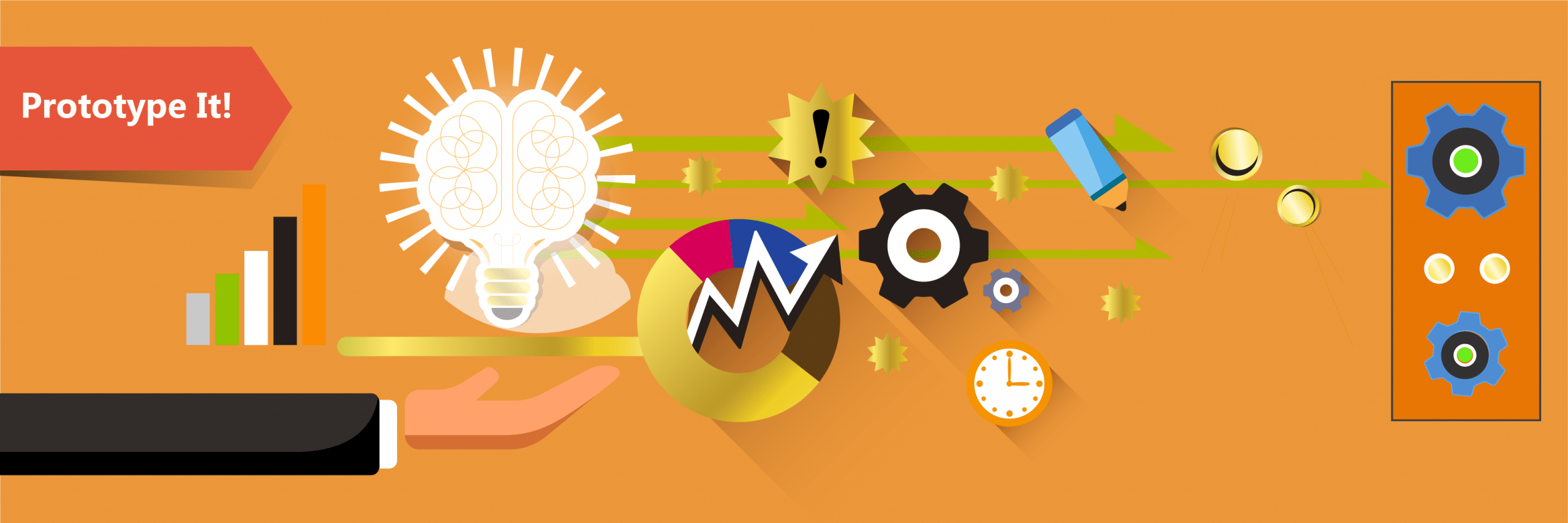
The Stages of Prototype Development
Prototype development plays a critical role in the product development process. While most often thought of as the final step before production begins, typically, several less refined iterations occur before the process reaches this step. Because testing provides valuable information at each stage, prototyping serves many purposes throughout the design and development of the product. For an industrial product, it’s not unusual to complete three to ten prototypes before reaching the final one. At which time the product is ready for manufacture.
Prototype Development
Merriam-Webster defines a prototype as “an original model on which something is patterned.” However, keep in mind that in this context, the “original” develops over time. And, is based on the refinement of many versions of the prototype.
Developers use early prototypes to prove underlying assumptions about and functionality. They use them to assess things like the viability of an idea, how users interact with the product, and to determine the value of a feature.
Once the basics are defined, later prototypes focus on aesthetics, refining the user interface, testing the strength and durability of various components, and optimizing the production processes. The goal is to learn something at each stage that perfects the product and reduces the risk of failure. Additionally, later prototypes can be used for presentations to stakeholders and potential investors.
Four Stages of Prototype Development
1. Feasibility Prototype
The feasibility prototype helps validate the basic idea of the product as well as the individual features. This is the stage at which the saying “fail fast—fail cheap” comes into play. If an idea or feature is unrealistic, too costly, or not viable in the marketplace, now is the time to discover it. Developers use feasibility prototypes to look at the big picture without refinement to decide whether the project should go forward or not.
2. Preliminary Prototype
When you reach the preliminary prototype stage, it’s time to look more deeply into the components and how they work together. This is the stage where developers identify the limitations of the product as well as drawbacks in the design. At this stage, the product starts to take shape. However, because the product is still in the experimental phase, more features and components can be added by the developer.
3. Demonstration Prototype
The demonstration prototype includes most of the features and functionality of the final prototype. Now is when user testing begins. Also, the look and feel of the product gets more attention from designers. As a result, at this stage, the prototype also is shown to investors and other stakeholders.
4. Final Prototype
Before the final prototype is ready, the product may go through several pre-production prototypes. Although manufacturing is top of mind for developers throughout the process, this is the point at which focus shifts from gathering user opinions and testing to collecting manufacturer feedback. Materials sourcing, manufacturing costs, and assembly requirements all influence the final design. Once the product has a complete feature set and is fully optimized, the final prototype is ready. It becomes the basis for mass production.
Prototypes Improve Your Product
Each stage of prototyping is critical to the success of the product. Starting with the feasibility prototype, developers weed out products with a low probability of making it in the marketplace. Next, by identifying weaknesses in the design, developers can address them early in the process. Then, users test the product and provide suggestions for improvements. At that time, the product also is ready to present to investors and stakeholders. Finally, pre-production prototypes bring manufacturing concerns to the forefront where developers tackle those issues before the final prototype goes into mass production. Careful attention to the lessons learned at each stage of prototype development ensures only viable, well thought out, and well-designed products reach the market.
Want to know more about our Prototype Development process? Chat with us, or give us a call at 330-753-5300.
For more product development news and advice, follow us @advancedresources847.

